-
Differential settlements monitoring in railway transition zones using satellite-based remote sensing techniques Comput. Aided Civ. Infrastruct. Eng. (IF 8.5) Pub Date : 2025-06-04
J. N. Varandas, Y. Zhang, J. Shi, S. Davies, A. FerreiraRailway track transitions are prone to uneven settlements and track geometry degradation. Traditional monitoring methods are limited in coverage, which highlights the need for novel solutions. This study proposes a method that systematically integrates the high spatial resolution of Persistent Scatterer Interferometric Synthetic Aperture Radar (PS-InSAR) with the broader coverage of Small Baseline
-
Tunnel lining segmentation from ground‐penetrating radar images using advanced single‐ and two‐stage object detection and segmentation models Comput. Aided Civ. Infrastruct. Eng. (IF 8.5) Pub Date : 2025-06-03
Byongkyu Bae, Yongjin Choi, Hyunjun Jung, Jaehun AhnRecent advances in deep learning have enabled automated ground‐penetrating radar (GPR) image analysis, particularly through two‐stage models like mask region‐based convolutional neural (Mask R‐CNN) and single‐stage models like you only look once (YOLO), which are two mainstream approaches for object detection and segmentation tasks. Despite their potential, the limited comparative analysis of these
-
Deep learning for computer vision in pulse-like ground motion identification Comput. Aided Civ. Infrastruct. Eng. (IF 8.5) Pub Date : 2025-05-28
Lu Han, Zhengru TaoNear-fault pulse-like ground motions can cause severe damage to long-period engineering structures. A rapid and accurate identification method is essential for seismic design. Deep learning offers a solution by framing pulse-like motion identification as an image classification task. However, the application of deep learning models faces multiple challenges from data and models for pulse-like motion
-
Cost‐effective excavator pose reconstruction with physical constraints Comput. Aided Civ. Infrastruct. Eng. (IF 8.5) Pub Date : 2025-06-02
Zongwei Yao, Chen Chen, Hongpeng Jin, Hongpu Huang, Xuefei Li, Qiushi BiExcavator safety and efficiency are crucial for construction progress. Monitoring their 3D poses is vital but often hampered by resource and accuracy issues with traditional methods. This paper presents a method to reconstruct the 3D poses of excavators using a cost‐effective monocular camera while considering physical constraints. The approach involves two steps: deep learning to identify 2D key points
-
Signal noise estimation and removal of sub‐mm 3D pavement texture data using 1D residual denoising network Comput. Aided Civ. Infrastruct. Eng. (IF 8.5) Pub Date : 2025-06-01
Guolong Wang, Kelvin C. P. Wang, Guangwei Yang, Joshua Q. Li, Amir GolalipourSignal noise removal is an indispensable and critical procedure in obtaining clean pavement texture data for reliable pavement evaluation and management. Nevertheless, the presently established denoising approaches to pavement texture data still rely on traditional techniques that have long struggled with removing noise accurately and consistently. This paper innovatively initiates a one‐dimensional
-
Automated Intelligent Modal Identification and Tracking for High-Rise Buildings without Prior Information J. Build. Eng. (IF 6.7) Pub Date : 2025-05-31
Kang Zhou, Jia-Le Shi, Ji-Yang Fu, Jing Song, Ming-Gang Duan, Yun-Cheng HeAutomated modal identification and tracking of high-rise buildings are challenging due to complex ambient excitations, closely spaced modes, nonlinear and time-varying modal parameters, and demands for high efficiency and accuracy, yet critical for structural health monitoring (SHM) to detect potential damage and ensure structural safety. This study proposes an automated intelligent modal identification
-
Optimal Stochastic Energy Management of Smart Building Microgrids with Electric Mobility and Flexibility Enhancement J. Build. Eng. (IF 6.7) Pub Date : 2025-05-31
Mohammed Alruwaili, Abdulaziz Alanazi, Mohana AlanaziThis study explores optimal energy management in smart buildings designed as microgrid systems, where the growing use of renewable energy and electric mobility creates challenges due to uncertainty and variability in supply and demand. The main goal is to reduce operational costs, cut emissions, and improve energy flexibility under uncertain conditions. To achieve this, a stochastic optimization framework
-
Optimization study on artificial ground freezing in elliptical tunnel construction: A comprehensive analysis of groundwater flow and thermodynamic parameters of soil Tunn. Undergr. Space Technol. (IF 6.7) Pub Date : 2025-05-31
Gyu-Hyun Go, Viet Dinh LeRecently, there has been a growing interest in the use of Artificial Ground Freezing (AGF) to temporarily stabilize unstable ground at tunnel construction sites. Recognizing that the effectiveness of this method is significantly influenced by groundwater flow, it is crucial to conduct a sophisticated thermal-hydraulic coupling analysis to assess the potential adverse effects of groundwater flow in
-
Network analysis and graph neural network (GNN)-based link prediction of construction hazards Autom. Constr. (IF 9.6) Pub Date : 2025-05-30
Brian H.W. Guo, Qilan Li, Wen Yi, Bowen Ma, Zhe Zhang, Yonger ZuoHazard recognition is critical for construction safety, especially for accident prevention. Traditional methods often fail to capture the dynamic and interdependent nature of construction hazards. To address this issue, this paper proposes a network-based framework that conceptualizes construction hazards as dynamic interactions between objects with hazardous attributes. A link prediction model using
-
Data integration for space-aware Digital Twins of hospital operations Autom. Constr. (IF 9.6) Pub Date : 2025-05-30
Nicola Moretti, Yin-Chi Chan, Momoko Nakaoka, Anandarup Mukherjee, Jorge Merino, Ajith Kumar ParlikadHealthcare facilities are complex systems where operational efficiency depends on space, processes, resources, and logistics. While many studies propose process-simulation-based improvements, few dynamically consider the built space’s effect on process efficiency. The critical challenge here is the effective integration of data from these disparate domains. This article addresses this challenge by
-
A novel pressure-resistant isolation layer for tunnels and performance analysis Tunn. Undergr. Space Technol. (IF 6.7) Pub Date : 2025-05-30
Qingcheng Yang, Ping Geng, Yan Zhao, Song Wang, Changjian Chen, Qi WangAfter the installation of rubber isolation layer in tunnels, surrounding rock convergence may apply permanent pressure on the tunnel, compressing the isolation material. This can reduce its elasticity, impairing its recovery capacity and potentially leading to failure. Therefore, this paper proposes a new type of pressure-resistant isolation layer that embeds the compressive layer into the energy dissipation
-
Study on effect of fibers reinforcement on sand soil liquefaction mitigation and shield tunnel stability under seismic conditions Tunn. Undergr. Space Technol. (IF 6.7) Pub Date : 2025-05-30
Jun Shen, Xiaohua Bao, Xiangsheng Chen, Zhizao Bao, Hongzhi CuiFiber reinforcement has been demonstrated to mitigate soil liquefaction, making it a promising approach for enhancing the seismic resilience of tunnels in liquefiable strata. This study investigates the seismic response of a tunnel embedded in a liquefiable foundation locally improved with carbon fibers (CFs). Consolidated undrained (CU), consolidated drained (CD), and undrained cyclic triaxial (UCT)
-
The effect of ground improvement materials on the impact resistance and behavior of buried pipes: An experimental and numerical study Tunn. Undergr. Space Technol. (IF 6.7) Pub Date : 2025-05-30
Mohammad Manzoor Nasery, Elif Ağcakoca, Sedat Sert, Mohammad Saber Sadid, Zeynep YamanBuried pipes are subjected to static and dynamic loads depending on their areas of use. To mitigate the risk of damage caused by these effects, various materials and reinforcement methods are utilized. In this study, five buried uPVC pipes designed in accordance with ASTM D2321 standards were reinforced with three different ground improvement materials: Geocell, Geonet, and Geocomposite, and experimentally
-
Dynamic characteristics and energy absorption mechanism of prestressed anchorage support Tunn. Undergr. Space Technol. (IF 6.7) Pub Date : 2025-05-30
Qi Wang, Mingzi Wang, Shuo Xu, Bei Jiang, Rugang DuanIn deep underground engineering construction and resource exploitation, complex conditions such as high stress and strong disturbance are often encountered, and dynamic disasters such as rockburst and coal burst are prone to occur. As a common anchorage support form in deep underground engineering, bolts and cables are often applied with high prestress to improve the bearing capacity of surrounding
-
Automated detection and quantification of structural component dimensions using segment anything model (SAM)-based segmentation Autom. Constr. (IF 9.6) Pub Date : 2025-05-29
Gang Xu, Yingshui Zhang, Qingrui Yue, Xiaogang LiuThis paper presents a method for automatic detection and quantification of full cross-sectional dimensions of structural components using oblique photography and the SAM-dimension (Segment Anything Model-dimension) model. Unlike traditional methods that measure only a single cross-section, this approach enables full cross-sectional dimension detection across the entire component, enhancing efficiency
-
Geometrically consistent energy-derivative attention CNN for semantic segmentation of multicategory structural damage Autom. Constr. (IF 9.6) Pub Date : 2025-05-29
Xin Jing, Zhanxiong Ma, Tao Zhang, Yu Wang, Ruixian Huang, Yang Xu, Qiangqiang ZhangEngineering structural damage often exhibits diverse and complex features across multiple scales within small-scale regions of interest (ROI), complicating post-earthquake assessments. This paper proposes an interpretable deep learning (DL) framework for semantic segmentation of multicategory damage. Energy-derivative attention modules are integrated into convolutional neural networks (CNNs) to enhance
-
Subsurface utility detection and augmented reality visualization using GPR and deep learning Autom. Constr. (IF 9.6) Pub Date : 2025-05-29
Mahmoud Hamdy Safaan, Mahmoud Metawie, Mohamed MarzoukRecent urban revitalisation requires advanced utility management and innovative technology to achieve high-precision utility management. This paper introduces an automated framework that surpasses traditional methods of subsurface utility detection by integrating Ground Penetrating Radar (GPR), deep learning, and Augmented Reality (AR) to provide an advanced solution for subsurface detection and visualization
-
Semi-autonomous aerial robot for ultrasonic assessment of crack depth and surface velocity in concrete structures Autom. Constr. (IF 9.6) Pub Date : 2025-05-29
Luca Belsito, Diego Marini, Luca Masini, Matteo Ferri, Miguel Ángel Trujillo, Antidio Viguria, Alberto RoncagliaThe measurement of ultrasonic surface velocity in concrete and the ultrasonic Time Of Flight method for estimating the depth of surface opening cracks in concrete are important techniques for maintenance of constructions, which are currently performed manually. This paper demonstrates the possibility to automate these measurements by means of an Unmanned Aerial Vehicle (UAV) equipped with a robotic
-
End‐to‐end frequency enhancement framework for GPR images using domain‐adaptive generative adversarial networks Comput. Aided Civ. Infrastruct. Eng. (IF 8.5) Pub Date : 2025-05-29
Hancheng Zhang, Yuanyuan Hu, Qiang Wang, Zhendong Qian, Pengfei LiuGround‐penetrating radar (GPR) offers nondestructive subsurface imaging but suffers from a trade‐off between frequency and penetration depth: High frequencies yield better resolution with limited depth, while low frequencies penetrate deeper with reduced detail. This paper introduces a novel frequency enhancement method for GPR images using domain‐adaptive generative adversarial networks. The proposed
-
Early detection and location of unexpected events in buried pipelines under unseen conditions using the two‐stream global fusion classifier model Comput. Aided Civ. Infrastruct. Eng. (IF 8.5) Pub Date : 2025-05-29
Sun‐Ho Lee, Choon‐Su Park, Dong‐Jin YoonFailure of buried pipelines can result in serious impacts, such as explosions, environmental contamination, and economic losses. Early detection and location of unexpected events is crucial to prevent such events. However, conventional monitoring methods exhibit limited generalization performance under varying environmental and operational conditions. Furthermore, the cross‐correlation‐based time difference
-
Identifying urban energy-vulnerable areas: a machine learning approach J. Build. Eng. (IF 6.7) Pub Date : 2025-05-29
Antonio J. Aguilar, María Fernanda Guerrero-Rivera, Maria L. de la Hoz-TorresAccess to energy services is essential for preserving health and well-being. However, energy poverty is a challenge affecting millions of citizens worldwide, which could even worsen due to the predicted severity of climate change. Energy poverty vulnerability and social problems are often linked to energy-inefficient buildings. Thus, identifying energy-inefficient dwellings in energy-vulnerable urban
-
Prediction on the degradation process of steel fiber-reinforced concrete lining of a ‘Deep Tunnel’ under sulfuric acid corrosion Tunn. Undergr. Space Technol. (IF 6.7) Pub Date : 2025-05-29
Qihang Xu, Xin HuangSulfuric acid corrosion poses a significant threat to urban ‘deep tunnel’ systems, exacerbating flood disasters and causing economic losses. Therefore, it is crucial to predict the deterioration process of steel fiber-reinforced concrete under sulfuric acid corrosion. This study developed four predictive models for the degradation process of steel fiber-reinforced concrete of ‘deep tunnel’ lining during
-
Identification of segment joint and automatic segmentation for shield tunnel based on LiDAR detection Tunn. Undergr. Space Technol. (IF 6.7) Pub Date : 2025-05-29
Shui-Long Shen, Jia-Xuan Zhang, Yu-Lin Chen, Annan ZhouThis study presents a novel method for identifying joints and automatically segmenting shield tunnels using light detection and ranging (LiDAR). In cylindrical coordinates, the Hough transform is used to extract feature LiDAR data corresponding to ring joints at different azimuths. This feature extraction using LiDAR data facilitates the computation of ring joint feature coordinates and average ring
-
On the impact of urban climate and heat islands on building energy performance: A critical review Energy Build. (IF 6.6) Pub Date : 2025-05-29
Farzad Hashemi, Gerald MillsUrban Heat Islands (UHIs) substantially alter local climates, yet their impacts on building energy performance remain inconsistently quantified and poorly integrated into simulation workflows, energy codes, and planning practice. This review critically synthesizes U.S.-based studies that model the impacts of the UHI effect on building heating and cooling loads, revealing substantial variability in
-
Coping strategies and resilience of New Zealand tradeswomen in construction: navigating challenges Build. Res. Inf. (IF 3.7) Pub Date : 2025-05-29
Funmilayo Ebun Rotimi, Marcela Brauner, Nicola Naismith, Megan Burfoot, Mahsa Mohaghegh -
Knowledge graph for policy- and practice-aligned life cycle analysis and reporting Autom. Constr. (IF 9.6) Pub Date : 2025-05-28
Conor Shaw, Flávia de Andrade Pereira, Martijn de Riet, Cathal Hoare, Karim Farghaly, James O’DonnellThe built environment is a key leverage point for policy intervention to combat climate change and the statutory reporting of financial and non-financial indicators over the asset lifecycle is increasingly required. This poses significant information management challenges in a sector characterised by complexity. Contributions to-date which address Life Cycle Asset Information Management (LCAIM) remain
-
A surface electromyography–based deep learning model for guiding semi‐autonomous drones in road infrastructure inspection Comput. Aided Civ. Infrastruct. Eng. (IF 8.5) Pub Date : 2025-05-28
Yu Li, David Zhang, Penghao Dong, Shanshan Yao, Ruwen QinWhile semi‐autonomous drones are increasingly used for road infrastructure inspection, their insufficient ability to independently handle complex scenarios beyond initial job planning hinders their full potential. To address this, the paper proposes a human–drone collaborative inspection approach leveraging flexible surface electromyography (sEMG) for conveying inspectors' speech guidance to intelligent
-
Learning error distribution kernel‐enhanced neural network methodology for multi‐intersection signal control optimization Comput. Aided Civ. Infrastruct. Eng. (IF 8.5) Pub Date : 2025-05-28
H. Wang, Y. Wang, W. Li, A. B. Subramaniyan, G. ZhangTraffic congestion has substantially induced significant mobility and energy inefficiency. Many research challenges are identified in traffic signal control and management associated with artificial intelligence (AI)‐based models. For example, developing AI‐driven dynamic traffic system models that accurately capture high‐resolution traffic attributes and formulate robust control algorithms for traffic
-
Machine learning models for predicting the International Roughness Index of asphalt concrete overlays on Portland cement concrete pavements Comput. Aided Civ. Infrastruct. Eng. (IF 8.5) Pub Date : 2025-05-28
K. Kwon, Y. Yeom, Y. J. Shin, A. Bae, H. ChoiAlthough estimating the International Roughness Index (IRI) is crucial, previous studies have faced challenges in addressing IRI prediction for asphalt concrete (AC) overlays on Portland cement concrete (PCC) pavements. This study introduces machine learning to predict the IRI of AC overlays on PCC pavements, focusing on incorporating pre‐overlay treatments to reflect their composite characteristics
-
A one-year field-scale experiment on the daylighting and building thermal performance of thermotropic window in subtropical area J. Build. Eng. (IF 6.7) Pub Date : 2025-05-28
Xiaoqiang Hong, Fan Yang, Yihan Huang, Feng ShiThermotropic (TT) glazing, which enable dynamic solar modulation through light-scattering behaviors, has great potential to enhance building performance in energy efficiency, visual and thermal comfort. Many researches have been carried out by building performance simulation or short-term laboratory-scale experiments. In this work, a one-year field-scale experiment was conducted in Zhangzhou (a subtropical
-
Air pollution in residential kitchens: Sources, health hazards and control technologies J. Build. Eng. (IF 6.7) Pub Date : 2025-05-28
Guozhu Li, Lin Chen, Shuai Wang, Kailiang Huang, Chong Meng, Qingqin Wang, Shui YuAs the concept of “healthy kitchen” continues to take root deeply in the minds in public consciousness, growing emphasis has been placed on both the health impacts of airborne pollutants in kitchen environments and the control of residential kitchen air pollution. In order to better create a healthy environment in residential kitchens, this paper reviewed and summarized the emission factors of kitchen
-
Influence of leading-edge obstacles on flow field and noise of axial flow fan for building ventilation J. Build. Eng. (IF 6.7) Pub Date : 2025-05-28
Tao Yu, Hailu Yao, Ruiyang Mi, Yongxing Song, Peng LiuAxial fans are widely employed in ventilation and air-conditioning systems, yet the associated noise pollution remains a significant challenge. This study investigates the influence of leading-edge modifications on the aerodynamic performance and noise characteristics of an axial flow fan utilized in building ventilation. Three types of leading-edge obstacles, including tetrahedral, hemispherical,
-
Multi-objective optimization of capacity configuration for district heating and cooling system based on life cycle cost and annual carbon dioxide emissions J. Build. Eng. (IF 6.7) Pub Date : 2025-05-28
Yucheng Ren, Zhili Ren, Gang Zou, Pengcheng Zhang, Xueqi Xu, Yimin XiaoDistrict heating and cooling (DHC) systems with energy storage are highly promising due to their high economic viability and energy-saving potential. However, inadequate consideration of time-of-use (TOU) pricing, annual load demand variations and control strategies often leads to excessive capacities and low energy efficiency. A multi-objective optimization (MOO) model is established by combining
-
Black carbon concentration and health impact in urban school buildings in South Korea: Focus on student behavior patterns J. Build. Eng. (IF 6.7) Pub Date : 2025-05-28
Dongjun Park, Sihyeon Kim, Kyungmo Kang, Joosang Lee, Hooseung Na, Taeyeon KimThis study investigates students' exposure to indoor black carbon (BC) in classrooms, with a focus on how student behavior influences indoor BC concentrations. The significance of this research lies in the potential health risks associated with prolonged exposure to BC, particularly in educational buildings where children spend extended periods. This study aimed to assess indoor BC concentrations,
-
An event-triggered stochastic model predictive control of indoor thermal environment for building energy management J. Build. Eng. (IF 6.7) Pub Date : 2025-05-28
Ning He, Jiawen Guo, Yanxin Li, Yubo Quan, Shuting Xiong, Fuan Cheng, Danlei ChuStochastic model predictive control (SMPC) considering randomness constraints for weather characteristics has been widely adopted to achieve energy diminution and human comfort regulation for building energy management (BEM). However, the substantial computational loads involved in solving the complex optimization problem pose a significant challenge to the real-time implementation of SMPC in actual
-
A performance simulation of the coupled solar wall and earth-air heat exchanger system heating technology J. Build. Eng. (IF 6.7) Pub Date : 2025-05-28
Qinghua Guo, Peijun Sun, Fei Xia, Ximeng Lv, Sijia WangHeating constitutes a significant portion of the total energy consumption over a building's life cycle. This is particularly pronounced in rural areas, where winter heating can account for over 50 % of the total energy demand. Consequently, the adoption of green and energy-efficient heating methods is of paramount importance for energy conservation and emission reduction in rural residential buildings
-
Evaluating the contribution of on-site industrialized construction technologies towards industrialization goals J. Build. Eng. (IF 6.7) Pub Date : 2025-05-28
Shengbin Ma, Zhongfu Li, Ruiyan ZhengIndustrialized construction (IC), encompassing off-site construction (OSC) and on-site industrialized construction (OIC), is pivotal to promoting sustainability in the construction sector. However, existing research in the construction industry has focused predominantly on the advantages of OSC, while overlooking the value of OIC to the broader industrialization of the building sector. In this paper
-
An online dynamic model based on Physical-Constraint Broad Learning System for extrapolation scenarios of chillers Energy Build. (IF 6.6) Pub Date : 2025-05-28
Anjun Zhao, Qihang Ren, Wei Quan, Na Zhang, Liu WeiChillers account for the majority of energy consumption in central air-conditioning refrigeration stations. However, conventional models lack strong out-of-sample generalization, making it difficult to accurately reflect chiller performance variations under multiple operating conditions. Consequently, there is a lack of reliable multi-condition performance data to support energy-efficient regulation
-
Semantic Digital Twinning for Cost-Optimal HVAC Operation: Real-Time Application to a House with Smart Thermostats and PV/Battery under a Time-of-Use Tariff Energy Build. (IF 6.6) Pub Date : 2025-05-28
Matin Abtahi, Luis Rueda, Benoit Delcroix, Andreas AthienitisSemantic digital twinning has traditionally supported design coordination, documentation, and planning during the early stages of building projects. However, its application in building operation and maintenance—particularly in real time—remains limited. This study proposes a methodology for cost-optimal HVAC load management using an operational digital twin, and demonstrates its real-time application
-
Semantic digital twin framework for monitoring construction workflows Autom. Constr. (IF 9.6) Pub Date : 2025-05-27
Yuan Zheng, Alaa Al Barazi, Olli Seppänen, Hisham Abou-Ibrahim, Christopher GörschAs construction workflows become increasingly dynamic, there is a growing need for Digital Twins (DTs) to support integrated, real-time workflow monitoring. However, establishing DTs in construction remains challenging due to fragmented data sources and the lack of systematic semantic integration methods. This paper investigates how semantic web ontologies can be systematically applied to establish
-
From fragmented data to unified construction safety knowledge: A process-based ontology framework for safer work Autom. Constr. (IF 9.6) Pub Date : 2025-05-27
Kilian Speiser, Sebastian Seiß, Frank Boukamp, Jürgen Melzner, Jochen TeizerEffective knowledge management in construction safety is essential yet challenging. Despite emerging technologies to collect valuable data automatically, it continues to rely on manual input. The heterogeneity of data sources in construction makes it additionally difficult, resulting in a high number of incidents due to late changes in the design. Presented is a unified ontology for construction safety
-
Zero‐shot framework for construction equipment task monitoring Comput. Aided Civ. Infrastruct. Eng. (IF 8.5) Pub Date : 2025-05-27
Jaewon Jeoung, Seunghoon Jung, Taehoon HongVision‐based monitoring of construction equipment is limited in scalability due to the high resource demands of collecting and labeling large datasets across diverse environments. This study proposes a framework that employs Zero‐Shot Learning (ZSL) and Multimodal Large Language Model (MLLM) to recognize construction equipment tasks from video frames without additional training data. The framework
-
Cover Image, Volume 40, Issue 13 Comput. Aided Civ. Infrastruct. Eng. (IF 8.5) Pub Date : 2025-05-27
-
Cover Image, Volume 40, Issue 13 Comput. Aided Civ. Infrastruct. Eng. (IF 8.5) Pub Date : 2025-05-27
-
Issue Information Comput. Aided Civ. Infrastruct. Eng. (IF 8.5) Pub Date : 2025-05-27
Click on the article title to read more.
-
Impact of door-opening events on air exchange rates in naturally ventilated spaces J. Build. Eng. (IF 6.7) Pub Date : 2025-05-27
Sowoo Park, Paul Choi, Doosam Song, Junemo KooWe investigated the effect of unintentional door-opening events on air exchange rates (AERs) in naturally ventilated environments. Using occupant-generated carbon dioxide (CO2) as a natural tracer gas, we performed experimental measurements in an office setting. We employed the mass-balance approach to estimate AER and CO2 generation rates, focusing on the influence of intermittent door-opening events
-
Monitoring the microcrack evolution in FRP-wrapped concrete using diffuse ultrasound J. Build. Eng. (IF 6.7) Pub Date : 2025-05-27
Ziqian Yang, Chang He, Qingzhao Kong, Cheng YuanFiber-reinforced polymer (FRP) has been extensively used in civil engineering to enhance the strength and durability of concrete structures. Developing a reliable, practical, and cost-effective method for monitoring and assessing the integrity of FRP-confined concrete is essential. However, due to the heterogeneous nature of materials and the potential for delamination, damage evolution in FRP-wrapped
-
Formulation of eco-friendly rendering mortars based on new alternative raw materials: performance and microstructure J. Build. Eng. (IF 6.7) Pub Date : 2025-05-27
N.A. Valoni, I.F. Sáez del Bosque, G. Medina, C. MedinaThe cement-based construction materials industry needs to adapt its formulations and production processes to the new paradigm characterized by sustainability, circularity and decarbonization. In this context, one of the strategies proposed by the prepared mortars industry is to seek new alternative recycled raw materials derived from industrial by-products. This paper analyses the feasibility of using
-
3D-printed earth-fiber Envelopes: Optimization of thermal performance and industrial applicability J. Build. Eng. (IF 6.7) Pub Date : 2025-05-27
Stefanie Rückrich, Guy Austern, Ofer Denay, Paul Seiwert, Yoav Sterman, Sürayyn Selvan, Ezri Tarazi, Abraham Yezioro, Yasha J. Grobman3D printing with earth-based materials is emerging as a sustainable building method; however, challenges remain regarding strength, thermal performance, and both logistical and environmental viability. This study aims to optimize the passive thermal performance and facilitate the industrial applicability of printed envelopes through advanced material and geometric design; implementing a mass-customizable
-
Axial compressive performance of full-scale reinforced hollow high strength concrete-filled thin-walled square steel tubular columns J. Build. Eng. (IF 6.7) Pub Date : 2025-05-27
Zhijian Yang, Weizhe Cui, Xu Li, Mo Liu, Weiqi Cui, Guochang LiManufacturing limitations in hollow concrete-filled steel tube (HCFST) structures often lead to significant void ratios, which can result brittle failure after reaching the peak load. To address this issue, this study proposes a novel structural solution: reinforced hollow concrete-filled square steel tubular (RHCFST) columns. These columns integrate the benefits of hollow concrete-filled steel tubes
-
Assessment of seismic load resistance for STPU-strengthened masonry wall structure J. Build. Eng. (IF 6.7) Pub Date : 2025-05-27
Tae-Hee Lee, Jang-Ho Jay KimAs seismic activity in Korea increases, concerns over aging masonry structures grow. By 2030, over 62 % of South Korea's buildings will be more than 30 years old, with masonry structures are a dominant structural type in older structures. Due to the low tensile strength of mortar, masonry buildings are highly vulnerable to seismic loads, requiring effective retrofitting and strengthening solutions
-
Towards accurate in-situ static yield stress measurement for 3D concrete printing: A study on novel fast penetration test J. Build. Eng. (IF 6.7) Pub Date : 2025-05-27
Ali Fasihi, Nicolas A. LibreThe accurate measurement of static yield stress is crucial for the success of 3D concrete printing (3DCP), ensuring the stability and buildability of printed layers. Traditional methods, like rotational rheometry, face limitations in applicability for 3DCP due to issues with portability. This paper introduces a novel fast penetration test approach for determining static yield stress of cement-based
-
Optimization of ratios and strength formation mechanism of fluidized solidified soil from multi-source solid wastes J. Build. Eng. (IF 6.7) Pub Date : 2025-05-27
Baofeng Lei, Shuai Pang, Feihan Xie, Henghui Fan, Jucong SunFluidized stabilized soil (FSS), characterized by high fluidity, self-compaction capability, and controllable strength, provides an innovative solution for backfilling narrow and geometrically complex voids in civil engineering. In this study, loess was utilized as the base soil, and FSS was synthesized by synergistically combining blast furnace slag (BFS), fly ash (FA), carbide slag (CS), and NaOH
-
Extraction of image fractal characteristics of rock chips based on the Sandbox method and analysis of shield tunneling performance Tunn. Undergr. Space Technol. (IF 6.7) Pub Date : 2025-05-27
Changbin Yan, Yuxuan Shi, Zihe Gao, Weiwei ZhanThe size distribution of rock chips can fully reflect the performance of shield machine, and existing size distribution indicators suffer from low efficiency and poor accuracy. Therefore, the aim is to find an accurate and rapid quantitative indicator to characterize the rock chips size distribution and address the engineering issues of shield machine rock-breaking efficiency analysis and tunneling
-
Sustainable thermoelectric energy harvesting in fly ash bamboo fiber reinforced concrete for smart infrastructure Energy Build. (IF 6.6) Pub Date : 2025-05-27
Yong Luo, Chunpeng Liu, Dianah Mazlan, S.S. Naveen KumarConcrete is widely used in infrastructure, and its waste heat recovery for thermoelectric power generation holds remarkable potential for energy utilization. However, optimizing the thermal conductivity of concrete to enhance thermoelectric conversion efficiency remains a critical challenge. This study investigates C40 concrete modified with bamboo fibers and fly ash, evaluating the thermal conductivity
-
Weighted adaptive active transfer learning for imbalanced multi-object classification in construction site imagery Autom. Constr. (IF 9.6) Pub Date : 2025-05-26
Karunakar Reddy Mannem, Samuel A. Prieto, Borja García de Soto, Fernando BacaoConstruction site monitoring relies on robust image classification to enhance safety, track progress, and optimize resource management. However, the amount of clutter and the high cost of manual labeling pose significant challenges. This paper presents an approach to multi-object classification in construction sites using Adaptive Active Transfer Learning. The Weighted Active Transfer Learning with
-
Two-stage optimization of infinite rotation-freedom façade systems using machine learning surrogate models Autom. Constr. (IF 9.6) Pub Date : 2025-05-26
Yisu Wang, Shuo Ji, Gang Feng, Chenyu HuangIncreasing the Degrees Of Freedom (DOFs) of Kinetic Façade Systems (KFS) potentially enhances environmental adaptability but presents challenges in mechanical feasibility and optimization complexity due to high-dimensional design spaces. This paper investigates the mechanism design and optimization strategies for multi-DOF KFS, and assesses the performance trade-offs associated with increased motion
-
Co-driven physics and machine learning for intelligent control in high-precision 3D concrete printing Autom. Constr. (IF 9.6) Pub Date : 2025-05-26
Song-Yuan Geng, Bo-Yuan Cheng, Wu-Jian Long, Qi-Ling Luo, Bi-Qin Dong, Feng XingWith the increasing demand for precise control in 3D concrete printing, coordinating material rheological properties and printing parameters has become a critical challenge. This paper addresses how to intelligently optimize printing parameters to adapt to varying concrete material attributes and improve printing quality. A dual-path framework co-driven by physical information equations (PIE) and machine
-
Standardisation framework for metal additive manufacturing in construction Autom. Constr. (IF 9.6) Pub Date : 2025-05-26
Xin Meng, Leroy GardnerWire-arc directed energy deposition (DED-Arc), also known as wire arc additive manufacturing (WAAM), brings about unprecedented opportunities in the construction sector to improve material efficiency, enhance automation and reduce embodied carbon. To address the current standardisation gap, a normative framework for the use of DED-Arc in construction is proposed in this paper. The current standardisation
-
Self‐supervised domain adaptive approach for extrapolated crack segmentation with fine‐tuned inpainting generative model Comput. Aided Civ. Infrastruct. Eng. (IF 8.5) Pub Date : 2025-05-26
Seungbo ShimThe number and proportion of aging infrastructures are increasing, thereby necessitating accurate inspection to ensure safety and structural stability. While computer vision and deep learning have been widely applied to concrete cracks, domain shift issues often result in the poor performance of pretrained models at new sites. To address this, a self‐supervised domain adaptation method using generative


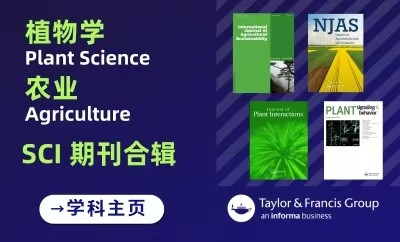
















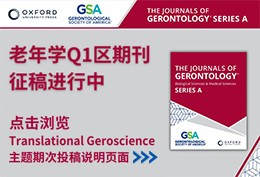


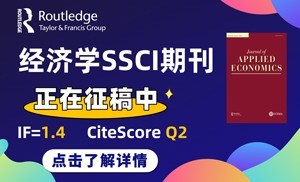




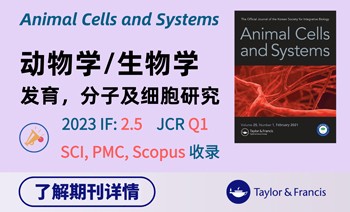


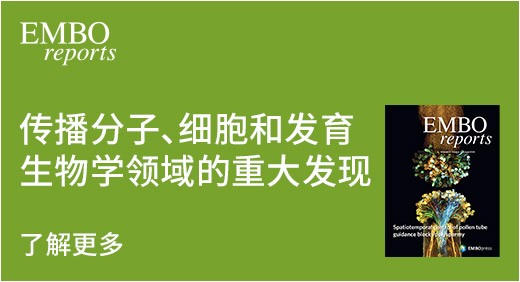
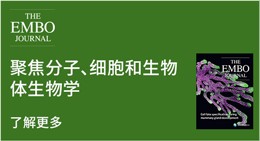


















 京公网安备 11010802027423号
京公网安备 11010802027423号